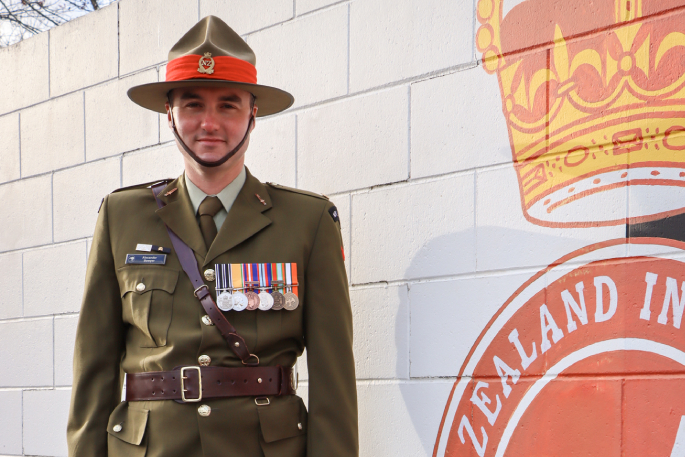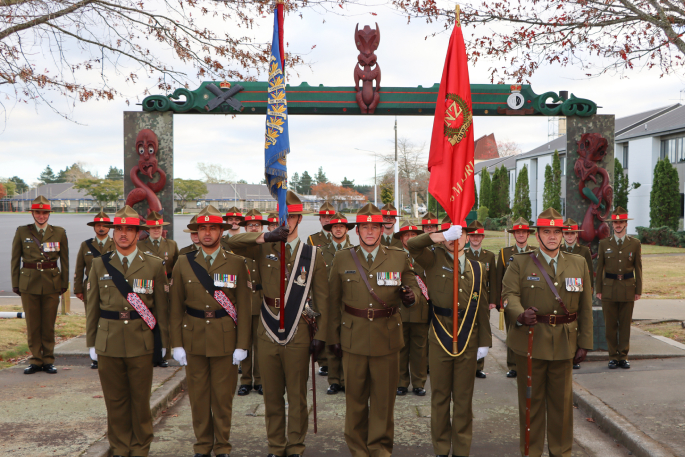New Zealand Defence Force personnel are on their way to Italy, to honour those who fought and died in what were among the most gruelling battles for New Zealand forces in the Second World War.
Nelson local Major Alex Bowyer, from the New Zealand Army’s 2nd/1st Battalion Royal New Zealand Infantry Regiment, is leading the contingent that will participate in commemorations marking 80 years since the Battles of Cassino.
The 36-year-old infantry officer says it’s an incredible honour.
“In 40 years’ time when I’m in retirement, sitting on the couch reading a book, I’ll have to stop and reflect. It certainly will be one of my top career highlights.”
Situated at the head of the Liri Valley, Cassino was a key point in the Gustav Line - a chain of German defences in the Italian mountains south of Rome. The battles to capture the town would ultimately liberate Italy and lead to the success of the planned Normandy landings.
 Major Alex Bowyer, from the New Zealand Army’s 2nd/1st Battalion Royal New Zealand Infantry Regiment, says it’s an incredible honour to be leading the NZDF contingent that will participate in commemorations marking 80 years since the Battles of Cassino in Italy. Photo supplied.
Major Alex Bowyer, from the New Zealand Army’s 2nd/1st Battalion Royal New Zealand Infantry Regiment, says it’s an incredible honour to be leading the NZDF contingent that will participate in commemorations marking 80 years since the Battles of Cassino in Italy. Photo supplied.
But New Zealand’s efforts there through February and March 1944, proved to be among the most costly battles of the Second World War for the 2nd New Zealand Division - of the 1,481 casualties, 343 lost their lives.
Next week, the NZDF contingent will support the New Zealand National Commemorative Service at the Cassino War Cemetery and a New Zealand Service of Remembrance at the Cassino Railway Station.
The Regimental Colour of 2nd/1st Battalion, which bears the Battle Honour CASSINO I, will be paraded at both services, along with the 28 (Maori) Battalion Banner.
“An area of significance to New Zealand when fighting at Cassino was the railway station,” Alex says.
“It was a key objective in both battles the New Zealand Division directly fought in. The first to fight there were the men of 28 (Maori) Battalion A and B Companies, and a month later 26 New Zealand Battalion fought and captured the railway station, holding it for nine days.
“In both cases there was a grievous loss of life for both units.”
The fierce close-combat fighting, and hundreds of thousands of shells and bombs, left little behind but broken river banks, piles of rubble and an ever-increasing loss of life throughout the battles.
At Cassino, the New Zealand Division along with 4th Indian Division, comprised the New Zealand Corps commanded by Lieutenant-General Sir Bernard Freyberg.
Fighting units included six New Zealand infantry battalions an armoured brigade, divisional artillery and engineer units totalling 17,000 men.
As a student of tactics and military strategy, Alex says being at Cassino would be fascinating.
“It took four attempts to actually take Cassino and open the gateway to Rome. The United States tried, New Zealand tried and finally Poland took it in May.
 New Zealand Defence Force personnel are on their way to Italy ahead of the 80th anniversary of the Battles of Cassino, to honour those who fought and died in what were among the most gruelling battles for New Zealand forces in the Second World War. Photo supplied.
New Zealand Defence Force personnel are on their way to Italy ahead of the 80th anniversary of the Battles of Cassino, to honour those who fought and died in what were among the most gruelling battles for New Zealand forces in the Second World War. Photo supplied.
“To stand on that ground, and get some understanding of what they were thinking and feeling when they were looking up the hill at Monte Cassino Abbey, will be such a unique experience.”
The ferocity of the fighting at Cassino had few parallels during the Second World War and Alex says it would be an honour to acknowledge the New Zealand soldiers who served there, alongside their Commonwealth, French, Polish and American allies who all made the ultimate sacrifice.
“It really will be special to experience this place with the contingent and recognise its significance in our nation’s history from World War Two.”
Cassino eventually fell in May 1944 to British and Polish troops, with support from the New Zealand artillery.



2 comments
Trawets
Posted on 15-05-2024 07:26 | By Trawets
I have collection of photographs taken during this battle by my uncle. Including photos of Mussolini hanging from the gallows He was with 27 machine gun company
To Trawets
Posted on 15-05-2024 16:46 | By Paula C
Is there anyway to view these photos please?as I have a family member that fought in Cassino and never came back.Family went to search for him and came back with a bit of soil framed.And somehow was lost over the years.If anyone was tough,it was all those soldiers that if it wasn't for them.We would not exist.Fully respect them for dying for us
Leave a Comment
You must be logged in to make a comment.